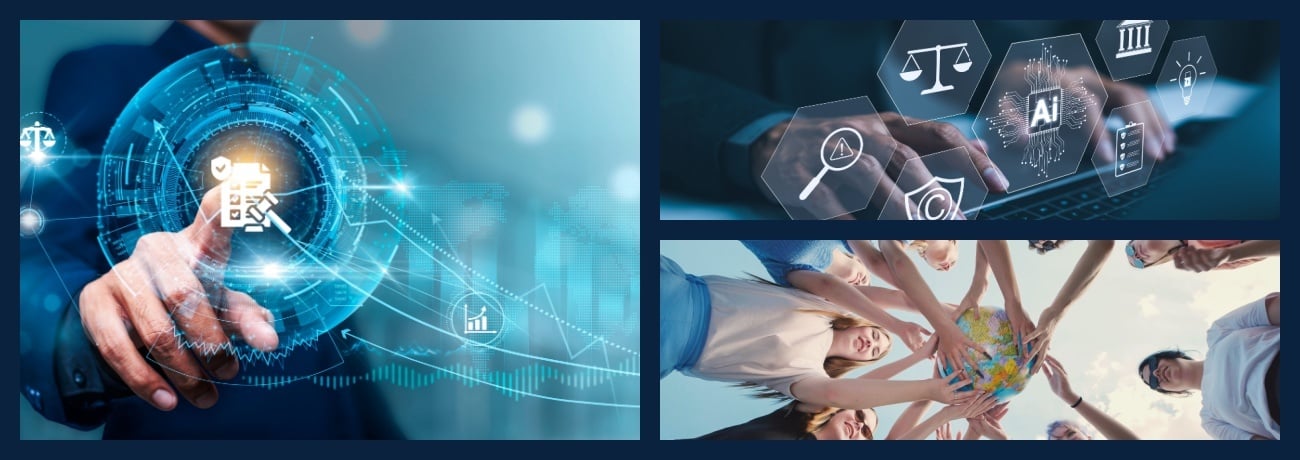A public service is only useful if it is available when the citizen needs it. Even at midnight. Even on a Sunday.
In a state that seeks to be modern, reliable and digital, technology cannot afford to rest. Operational continuity is today one of the most strategic pillars of public infrastructure. Therefore, planning a 24/7 digital infrastructure is not just a technical issue: it is an institutional responsibility.
This article is designed for technology leaders in the public sector who face the challenge of ensuring that their entities' digital services do not go down. Below, we break down the essential pillars for building a robust infrastructure, the key standards that ensure quality, the most common mistakes that can take an institution offline, and real examples of regional success.
24/7 digital infrastructure: the new standard of the modern state
A 24/7 digital infrastructure is one capable of ensuring that critical state systems (such as health, justice, security, education or citizen services) operate uninterruptedly, securely and scalably. It is no longer enough to "have servers". Today, the infrastructure must be resilient, interoperable and ready to respond even in crisis scenarios.
This continuous availability is not only a technical necessity: it is a citizen expectation and an ethical mandate. Every time a public system fails, so does an institutional promise. That is why the design of a modern digital infrastructure must begin with a clear vision of operational sustainability.
The six technical pillars of a 24/7 infrastructure
Building an infrastructure that never sleeps requires much more than installed capacity. It requires an architecture that is risk-aware, integrated in its components and supported by skilled personnel. These are the six fundamental pillars that every public entity must consider:
Redundant, low-latency connectivity 2.
Multiple access routes, ringed connections and submarine links ensure that even if one network fails, another will take over the traffic without interruption. Redundancy is not optional: it is the basis for uninterrupted operation. In addition, a good infrastructure must monitor traffic in real time and anticipate failures before they affect the user.
2. Cybersecurity with a preventive approach
Cyber-attacks on public entities are becoming more frequent and sophisticated. A 24/7 infrastructure must include next-generation firewalls, artificial intelligence-based intrusion detection systems, and automated response protocols. But just as important as the technology is the culture: security must be part of the design, not an afterthought.
3. Hybrid cloud with digital sovereignty
Not everything in the cloud and not everything on in-house servers. A hybrid model offers the best of both worlds: scalability when needed, control when required. For public entities, it is key to ensure that critical data remains under national jurisdiction, without sacrificing agility or interoperability with other systems.
4. Storage with geographic backup
In the event of any event (technical failures, fires, attacks, natural disasters), geographic backup makes it possible to recover operations in minutes. It is not just a matter of making backups, but of having replicas in physically separated areas, with automated recovery and validated with periodic tests.
5. Redundant power and climate control
Servers need more than electricity: they need electrical stability and constant cooling. Dual UPS systems, backup generators, dedicated substations and redundant CRAH climate control are part of the invisible infrastructure that supports continuity. Without these elements, any data center is vulnerable.
6. 24/7 human technical support
Finally, no technology stands alone. The presence of an experienced technical team, available at any time, makes the difference in critical moments. Human support, and not just automated, allows you to respond with sensitivity, knowledge of the environment and quick decisions in case of incidents.
International standards: guarantees that build trust
Meeting international standards is not just a technical seal of approval. It is a sign that the entity is aligned with global best practices in security, availability and service management. Some of the most relevant include:
- TIER III and IV, which certify the capacity of datacenters to operate without interruptions even during maintenance.
- ISO/IEC 27001 and 27701, which establish information security and personal data protection frameworks.
- ISO/IEC 20000-1, focused on integrated IT service management.
- SOC 2 and PCI DSS, fundamental when handling transactions or sensitive information.
Beyond compliance, these standards help to standardize processes, strengthen the technological culture and increase the confidence of citizens and control entities.
Common errors that weaken business continuity
In practice, many public entities make structural errors that compromise their technological stability. Some of the most frequent include:
- Betting on a single network provider without backup paths.
- Maintaining obsolete servers, without support or replacements.
- Operating with isolated systems, without interoperability or data synchronization.
- Not having a proven disaster recovery plan.
- Lacking proactive monitoring and early warnings.
Avoiding these errors does not always require large investments. Many times, it is enough to redesign processes, prioritize key decisions and work with partners who understand the public environment.
Inspiring success stories: Colombia and Peru

In Latin America there are already positive experiences that show that building digital infrastructure 24/7 is possible, even with budgetary or regulatory restrictions.
In Colombia, ICFES and SIMO1 have managed to handle demand peaks by migrating to hybrid architectures. The National Digital Agency has promoted security and continuity standards through interoperability, and MinTIC has led projects such as the Data Sandbox, which allow innovation without compromising data security.
In Peru, the SIS has implemented a datacenter with international certifications that strengthen the availability of the health system. The Digital Government Secretariat, for its part, has managed to consolidate interoperable services and centralized platforms as part of the National Digital Government Plan. SUNAT, with its hybrid architecture, is a scalable and resilient digital taxation model.
These cases show that change is not only possible, but urgent.
Is your organization ready to operate 24/7?
The best way to find out is to ask yourself key questions:
- How often does your institutional system or portal go down?
- How long does it take to detect and resolve a critical incident?
- Do you have redundant power and connectivity infrastructure?
- Do your systems meet international standards such as TIER III or ISO 27001?
- Do you have technological allies with state expertise that can respond at any time?
The answer to these questions not only defines the level of technological maturity of the entity. It also reflects the institutional commitment to citizenship.

SIMO (Support System for Equality, Merit and Opportunity) is the official digital platform of the National Civil Service Commission of Colombia that allows citizens to register their resume once and apply to multiple public employment calls, ensuring transparency and merit in the selection processes for positions in state entities.


.webp?width=150&height=68&name=Logo%20Espa%C3%B1ol%20Fondos%20Claros%20(1).webp)
.webp?width=130&height=58&name=Logo%20Espa%C3%B1ol%20Fondos%20Claros%20(1).webp)




.jpeg?width=352&name=Conexiones%20r%C3%A1pidas%20(1).jpeg)
.jpeg?width=352&name=Contenidos%20(1).jpeg)




.jpeg?width=352&name=Velocidad%20de%20internet%20(1).jpeg)


.jpeg?width=352&name=Edge%20Computing%20(1).jpeg)
